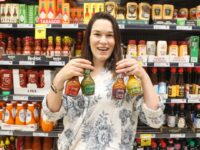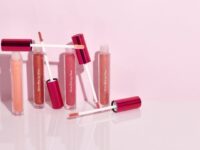
After establishing a local office in Sydney last month, and releasing a global business toolkit last week, short-form video platform TikTok is angling to become the next big destination for Australian advertising dollars.
However, unlike other social media platforms, such as Facebook, Instagram and Pinterest, static ads are largely out of the question on TikTok, which requires businesses to make a much more concerted effort to reach its approximately 800 million monthly users.
“It’s been amazing to see how our local brands adapt their campaigns to the platform as well as the current context and climate,” TikTok Australia’s general manager of global business solutions Brett Armstrong told Inside Retail.
“Particularly over the past tough few months, TikTok has been an important source of joy and positivity for our community.”
As TikTok continues to gain traction globally, its short, 15-second clips are serving the same purpose that videos on Vine once did – providing short bursts of humour or political opinion in easily digestible and shareable clips.
But while the now-defunct Vine was largely inhabited by users creating content for one another, TikTok’s new business toolkit allows brands to get in on the ground floor of a new video marketing tool.
And according to Armstrong, the brands seeing the strongest response on the platform are those embracing the main values of TikTok: creativity and authenticity.
“We highly encourage brands to spend time using TikTok, understanding the platform and short-video formats, looking at different trends and content that are unique and very real, and getting a sense of how other users engage with other creators and brands,” Armstrong said.
“As a brand looking to build a presence on TikTok, it takes more than simply being where your audience is – it takes understanding how to communicate in a way that resonates with them and facilitate a conversation.
“TikTok is a platform for creative, fun and positive experiences… best practice for brands would be to stay true to their story, telling it how they want it told while also thinking about TikTok’s unique format – ensuring content is authentic to the platform and the way people use it.”
According to Overdose Digital’s performance marketing director Vincent Cornielle, TikTok provides a significant opportunity for brands to reach a younger audience, who are not signing up to established social networks in the same numbers as millennials and older generations.
Brands that understand the audience on TikTok have the opportunity to further connect and build brand value with a new demographic, Cornielle told Inside Retail, but it could also be a challenge to design new creative experiences that are matched to the platform.
“Advertisers will risk alienating themselves if they get this wrong, and Tik Tok will risk frustrating their user base with poor quality advertising,” Cornielle said.
“Businesses with a strong e-commerce focus have been the most resilient to the effects of COVID-19 and many are seeing record sales figures – these businesses should take advantage of their forward momentum and trial out new ads platforms, the potential reward being low ad costs and the positive attention of a new cohort of customers.”
Social gets serious
But TikTok isn’t the only platform chasing advertising dollars from local businesses following the increase in online shopping in recent months.
Snapchat’s Dynamic Product Ads allow brands to automatically generate and update their ads in-app based on their product library, while Facebook recently revealed its own shopping platform, opening the gates for brands worldwide to begin selling products directly through Facebook, Instagram and Whatsapp.
And just last month, Pinterest partnered with Shopfiy to make it easier for brands to deploy shoppable pins, as well as upload product catalogues to the platform.
“Merchants are adapting to new realities and looking ahead to the future of retail, which is why we’re focused on making both our ads and organic features available and impactful,” Jeremy King, Pinterest’s senior vice president of technology, said.
















